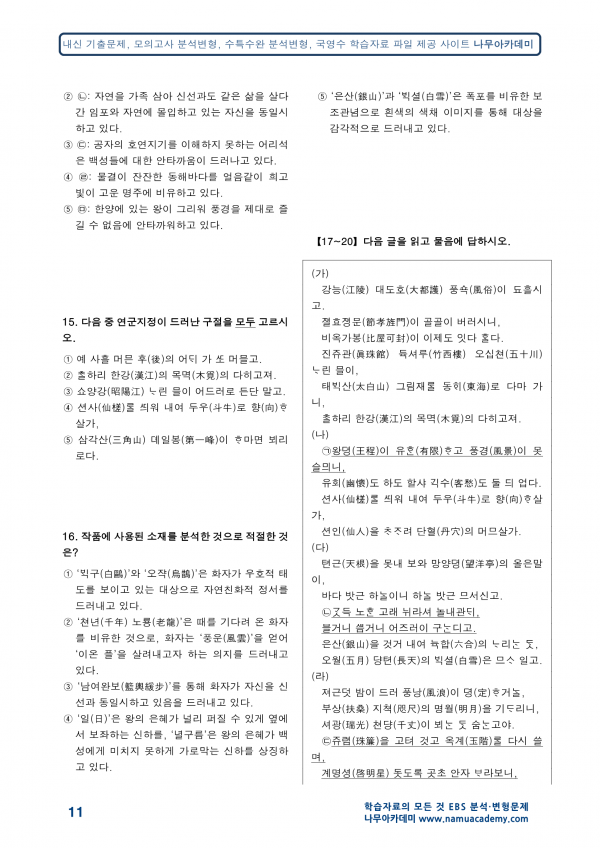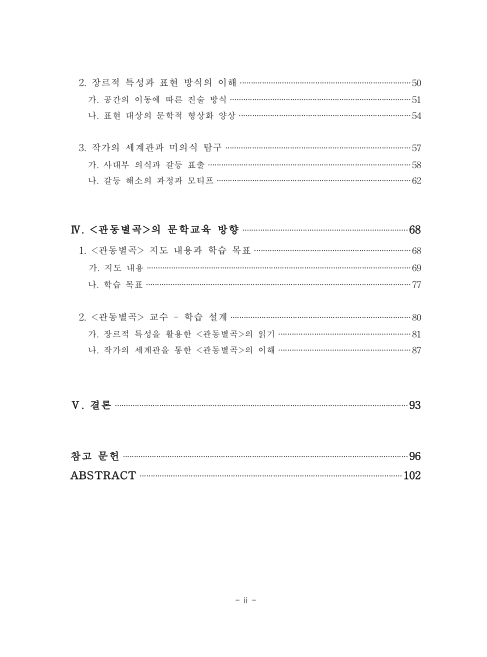관동별곡 문제
관동별곡 문제는 대한민국 경북 및 강원 지역에서 생산되는 쌀의 품질 문제를 일컫는 용어로, 최근 이 문제로 인한 걱정과 노력이 미국, 이탈리아, 중국 등 수많은 나라에서 이어져 왔습니다. 이 문제의 원인으로는 비료, 농약, 환경 오염, 일부 농가의 농활동 잘못, 유통 과정에서의 오염 및 관리 부족, 유전 건강 등이 들어가 있습니다.
현재 관동별곡 문제에 대한 대처방안이 많은 논의와 노력을 하고 있지만 해결되지 않은 문제이기도 합니다. 이 문제로 인한 영향은 대한민국 국민의 생활에 직/간접적으로 관여하고 있으며, 이 문제를 해결하기 위해 국내외에서 다양한 노력과 협력이 이뤄지고 있습니다.
관동별곡 문제의 역사
관동별곡 문제는 대한민국에서 발생한 문제로, 관동 지역에서 생산된 쌀의 품질이 낮아 관심을 받아왔습니다. 2008년부터 시작된 이 문제는 당시 환경부가 수질 및 대기 오염 지수를 발표하는 일본의 시스템을 모방하여 적용한 것이 시작되었습니다. 이 시기에 집중적으로 건강이 우려되는 유전체를 가진 쌀이 많이 채집되었고, 이후 국내외에 노출되면서 철저한 관리가 필요한 문제로 떠오르게 되었습니다.
그 후 대한민국 정부는 쌀의 생산 과정에서 종착 업계인 소비자까지 환경적 문제로 이어지는 문제로부터 쌀을 위한 새로운 생산방식과 생태를 고민하였지만, 문제 해결을 위한 대처방안을 예측하기가 쉽지 않았습니다.
관동별곡 문제의 원인
관동별곡 문제의 원인으로는 비료, 농약 사용, 지역 환경 오염 등이 책임을 지고 있습니다. 특히 비료, 농약 사용 등은 모두 농가의 경제활동과 밀접한 관계가 있으며, 경북 및 강원 지역에는 작은 규모의 농업 생산자들이 많아 체계적인 관리가 어렵기도 합니다. 이 외에도 추후까지 문제가 발생할 가능성이 있는 유전체가 산출되었으며, 인공적으로 유전체를 수정하는 행위도 전범으로 규정됩니다.
관동별곡 문제의 영향
관동별곡 문제는 대한민국 국민들에게 직접적인 영향을 끼치지만, 각종 전쟁이나 테러 등 국보를 보호하는 역할을 하는 경비대와 같은 부대들에게도 영향을 미칩니다. 이러한 문제는 경비대에서도 농업에 의존하는 경우가 많고, 또한 농업 업자가 경비대를 봉사해야 한다는 이야기가 있기 때문이죠. 더욱 중요한 것은, 이 문제는 대다수의 국민들이 쌀을 통해 직접적인 영향을 받고 있는 것입니다. 관동별곡 문제가 해결되지 않을 경우 대한민국 국민들의 건강에 직접적인 영향을 미치게 됩니다.
관동별곡 문제에 대한 대처방안
관동별곡 문제를 해결하기 위해서는 농가와 생산자들이 적극적으로 대처하려고 하는 것이 중요합니다. 아울러 정부와 모든 이해관계자들이 이 문제를 해결해 나가기 위해 다각도로 노력할 필요가 있습니다.
농업 생산과 프로젝트의 목적과 방향성을 제대로 이해하고 생산자와 소비자들이 신뢰할 수 있는 정보 공유를 기반으로 정확하고 안전한 생산을 지원할 것입니다. 농업 생산자들은 새로운 생산방식과 생태, 환경에 대해 광범위하게 연구하고, 쌀 생산의 안정성과 품질성을 높이기 위한 대처방안을 수립합니다. 이 과정에서 농가와 생산자들이 각자가 책임을 질 수 있도록 지원합니다.
또한 관동별곡 문제를 해결하고자 많은 기술과 연구가 이루어져 있습니다. 이 때문에 일시적인 결과가 나타날 수 있으며, 정부와 이해관계자들은 이 결과를 체계적으로 수집하고 분석해야 하는 것이 중요합니다.
관동별곡 문제 관련 법적 문제
관동별곡 문제와 관련한 법적인 문제로는, 농림부와 국내외 전문가들이 각종 제재 등 생산 방식을 제한할 수 있는 법률을 구체적으로 제시하고 있습니다. 이 경우에는 국내외의 결과와 비교하여 필요한 것만 적극적으로 채택하고 관리되어야 합니다. 이 외에도 제작자에게는 적극적인 보장과 상호보호를 제공해야 하며, 유전법상 명시할 수 있는 개념 및 조항이 적용되어야 합니다.
관동별곡 문제와 지속가능한 농업
관동별곡 문제를 해결하고 시작하는 지속가능한 농업은 생산자들과 소비자들이 신뢰할 수 있는 정보 공유와 생태, 재배, 환경 등의 철저한 관리가 이루어져야 합니다. 따라서, 농업 생산과 관련된 정책과 시스템을 제대로 이해하고 수립하여 농업 생산자들의 책임을 높이고 유지하고 건강한 재배 방식과 농업 위생 모니터링 등 필요한 제도를 수립하여 안전한 농업을 제공해야 합니다.
관동별곡 문제와 환경오염
관동별곡 문제와 환경오염은 밀접한 관계를 가지고 있습니다. 그들은 둘 다 과도한 비료나 농약 사용에 관련하고 있는 것으로 볼 수 있습니다. 관동별곡 문제에 심각한 영향을 끼친 유전체는 환경오염으로 나타날 것으로 예상되며, 이는 국가의 전략적 목표인 올바른 산업정책과 일괄적으로 채택될 필요가 있습니다.
또한, 환경오염을 줄이기 위한 체계적인 대처 방안을 모색해야 합니다. 이는 건강한 농업과 생활을 유지할 수 있도록 관리되어야 하며, 당사자들은 이러한 대처방안을 지지하고 실행해야 합니다.
관동별곡 문제의 해결을 위한 국제적 노력
관동별곡 문제는 국내 뿐만 아니라 국제적으로도 문제로 지목되고 있습니다. 이는 전 세계적인 농약 및 산업적 법규가 오랜 기간 동안 적용되어 왔기 때문입니다. 현재 국제기구는 여러 나라에서 이 문제를 해결하기 위한 방법을 제시하고 있으며, 농가와 생산자, 소비자들은 이 방법을 통해 국내 및 국제적으로 유익한 정보를 제공받을 수 있습니다.
FAQs
Q: 관동별곡 해석이 무엇인가요?
A: 관동별곡 해석은 경북 및 강원 지역에서 생산된 쌀의 품질 문제를 일컫는 용어입니다.
Q: 관동별곡 해석 pdf는 어디에서 구할 수 있나요?
A: 관동별곡 해석 pdf는 인터넷 검색 결과 무료로 다운로드할 수 있습니다.
Q: 기출비에서 관동별곡 문제가 자주 출제되나요?
A: 최근 기출비를 분석해 보면 관동별곡 문제가 자주 출제되는 것으로 나타나고 있습니다.
Q: 족보닷컴에서는 어떻게 관동별곡 문제를 다루고 있나요?
A: 족보닷컴은 관동별곡 문제를 다루고 있는 것으로 파악됩니다. 해당 사이트에서 자세한 정보를 얻을 수 있습니다.
사용자가 검색한 키워드: 관동별곡 문제 관동별곡 해석, 관동별곡 해석 pdf, 기출비, 족보닷컴
Categories: Top 19 관동별곡 문제
[고1 국어 신사고] 7(1)2 관동별곡 내신 대비 영상
여기에서 자세히 보기: c3.castu.org
관동별곡 해석
One of the most fascinating aspects of the 관동별곡 is its interpretation. The song is filled with many different images and stories, and can be seen as a multi-layered expression of Korean culture. In this article, we will explore some of the meanings and themes of the song, and provide a deeper understanding of this beloved Korean classic.
관동별곡 Overview
The title of the song, 관동별곡, literally means “Eastern Provinces Folk Song.” The song was first published in 1929 by Kim Joeng-Jeong, who collected and transcribed the lyrics from various sources. The lyrics of the song are in the “pansori” style, which is a traditional Korean style of narrative singing.
The song is composed of four verses, each of which depicts a different aspect of life in the East. In the first verse, the singer describes the beauty of the landscape, including the mountains, rivers, and trees. The second verse talks about the daily life of the Eastern people, and their hard work and resilience. The third verse is a love story, where the singer’s beloved is compared to the natural beauty of the East. Finally, in the fourth verse, the singer reflects on the beauty of the East and expresses his longing to return there someday.
관동별곡 Themes
One of the main themes of the song is the natural beauty of the East. The singer describes the mountains, rivers, and trees in rich detail, emphasizing the beauty and grandeur of the landscape. This theme reflects the traditional Korean appreciation of nature, and the importance of the natural world in Korean culture.
Another important theme of the song is the hardworking lifestyle of the Eastern people. The singer describes the daily work of the Eastern farmers, who work tirelessly in the fields to provide for their families. This theme reflects the value of hard work and perseverance in Korean culture, and the importance of community and family.
The love story in the third verse is another important theme of the song. The singer compares his beloved to the natural beauty of the East, using vivid imagery to express his feelings. This theme reflects the importance of love and relationships in Korean culture, and the deep emotional connections that can be formed through a connection to nature.
Finally, the fourth verse of the song reflects a longing for the East, and a desire to return home. This theme expresses the importance of roots and belonging in Korean culture, and the strong connection that Korean people feel to their homeland.
관동별곡 Interpretation
There are many different interpretations of the 관동별곡, and the meaning of the song can vary depending on the perspective of the interpreter. One common interpretation of the song is that it reflects the traditional Korean appreciation of nature and the importance of the natural world in Korean culture. The song emphasizes the beauty and grandeur of the landscape, as well as the hardworking lifestyle of the Eastern people who work the land.
Another interpretation of the song is that it reflects the traditional Korean value of community and family. The daily work of the Eastern farmers is seen as a collective effort, and the song expresses a deep respect for the role that each individual plays in supporting the greater community. This interpretation also reflects the importance of love and relationships, which are seen as essential to the well-being of the individual and the community as a whole.
Finally, some interpreters see the song as a reflection of the traditional Korean concept of “han,” which refers to a deep-seated collective feeling of sorrow and resentment. The singer’s longing to return to the East in the final verse can be seen as a manifestation of this feeling, which is often rooted in historical and political trauma. This interpretation reflects the deep sense of historical and cultural identity that is central to Korean culture.
관동별곡 FAQs
Q: What is the significance of the Eastern provinces in Korean culture?
A: The Eastern provinces have played an important role in Korean history and culture. They have traditionally been known for their beautiful landscapes, abundant natural resources, and hardworking people. The Eastern provinces have also been the site of significant political and cultural events throughout Korean history, including the Joseon Dynasty and Japanese occupation.
Q: What is a “pansori” style of singing?
A: Pansori is a traditional Korean style of narrative singing that dates back to the Joseon Dynasty. It is characterized by its use of a single singer accompanied by a “buk,” or traditional Korean drum. The singer typically tells a story through song, using a variety of vocal techniques and expressions to convey different emotions and characters.
Q: What is the role of nature in Korean culture?
A: Nature has played an important role in Korean culture for centuries. It is seen as a source of beauty, inspiration, and spirituality, and is revered for its power and majesty. Many traditional Korean practices, such as hiking and meditation, are focused on connecting with nature and appreciating its beauty and importance.
Q: What is the traditional Korean idea of “han”?
A: Han is a deep-seated collective feeling of sorrow and resentment that is often associated with Korean culture. It is believed to be a result of the country’s tumultuous history, including periods of colonization, war, and political oppression. Han is often seen as a complex and multi-faceted emotion that is central to the Korean experience.
Q: Why is the 관동별곡 still popular in Korea today?
A: The 관동별곡 is still popular in Korea today because it reflects many of the traditional Korean values and themes that are still relevant to contemporary Korean culture. The song’s emphasis on nature, hard work, community, and love can be appreciated by people of all ages and backgrounds, and its beautiful melody and lyrics have ensured its enduring popularity over the years.
관동별곡 해석 pdf
In this article, we will examine the content and importance of the Gwandong Byul-gok Interpretation PDF, with a focus on its features, benefits, and frequently asked questions.
Features of Gwandong Byul-gok Interpretation PDF
The Gwandong Byul-gok Interpretation PDF provides a comprehensive exploration of the various aspects of the Gwandong folk song tradition, including its historical background, cultural significance, and musical features. It contains detailed interpretations of the lyrics and melodies of dozens of traditional songs from the region, as well as insights into the social and historical context of each piece.
The PDF is organized into four main sections: Introduction, Interpretation of Songs, Additional Information, and Appendices. The Introduction provides an overview of Gwandong Byul-gok and introduces the key themes and characteristics of the music and lyrics. The Interpretation of Songs section presents detailed analyses of the lyrics and melody of 39 different Gwandong folk songs, providing readers with a deep understanding of their cultural and historical significance. The Additional Information section offers supplementary insights into the Gwandong Byul-gok tradition, including its relationship to other Korean music styles and its role in Korean popular culture. Finally, the Appendices include a glossary of key terms, a bibliography of relevant resources, and several appendices with additional information about the songs and their significance.
Benefits of Gwandong Byul-gok Interpretation PDF
There are several benefits to using the Gwandong Byul-gok Interpretation PDF:
1. It provides a deeper understanding of Korean culture and history: Gwandong Byul-gok has been an important form of music and poetry in Korea for centuries. By studying the history, cultural context, and musical features of this tradition, readers can gain a deeper appreciation of Korean history and culture.
2. It helps preserve a valuable cultural heritage: Gwandong Byul-gok is an important part of the cultural heritage of Korea. As modern Korea becomes more technologically advanced and economically developed, there is a risk that traditional forms of music and art will be lost. By studying and promoting Gwandong Byul-gok, we can help to preserve this valuable cultural heritage for future generations.
3. It supports research and academic inquiry: The Gwandong Byul-gok Interpretation PDF is an excellent resource for researchers and students of Korean history, culture, and musicology. By providing detailed analyses of the lyrics and melodies of these songs, as well as insights into the social and historical context of each piece, the PDF supports further research and inquiry into this important cultural tradition.
FAQs:
1. Who is the Gwandong Byul-gok Interpretation PDF intended for?
The Gwandong Byul-gok Interpretation PDF is intended for anyone interested in learning about and understanding the traditional Korean folk song tradition of the Gwandong region. This includes scholars, researchers, students, and members of the general public.
2. What is Gwandong Byul-gok?
Gwandong Byul-gok is a traditional Korean folk song tradition that originated in the Gwandong region of Korea. It is characterized by its simple melodies, poetic lyrics, and focus on themes such as love, nature, and the daily struggles of common people.
3. What is the historical background of Gwandong Byul-gok?
Gwandong Byul-gok originated in the late Joseon dynasty (1392-1910) and continued to be an important form of music and poetry in Korea throughout the 20th century. It has been performed and celebrated in various contexts, including weddings, funerals, and other social gatherings.
4. What is the cultural significance of Gwandong Byul-gok?
Gwandong Byul-gok is an important part of Korean cultural heritage. It reflects the values, traditions, and experiences of Korean society over many centuries and has played an important role in the development of Korean music and poetry. Gwandong Byul-gok also continues to be an influential part of Korean popular culture, with songs such as “Arirang” and “Ahrirang” being celebrated around the world.
5. What is included in the Interpretation of Songs section of the PDF?
The Interpretation of Songs section includes detailed analyses of the lyrics and melodies of 39 different Gwandong folk songs, providing readers with a deep understanding of their cultural and historical significance. The section includes information on the historical and cultural context of each song, as well as musical notation and detailed explanations of the lyrics.
6. What is the Additional Information section of the PDF?
The Additional Information section offers supplementary insights into the Gwandong Byul-gok tradition, including its relationship to other Korean music styles and its role in Korean popular culture. The section includes information on the various musical instruments used in Gwandong Byul-gok performances, as well as historical and cultural anecdotes and references.
7. How can I access the Gwandong Byul-gok Interpretation PDF?
The Gwandong Byul-gok Interpretation PDF is available online through various academic and research institutions. A simple online search will produce links to download the PDF from different sources. It is generally free of cost, however, some sources may require a fee to access it.
The Gwandong Byul-gok Interpretation PDF is an invaluable resource for anyone interested in learning about and understanding the traditional Korean folk song tradition of the Gwandong region. By providing detailed analyses of the lyrics and melodies of dozens of songs, as well as insights into the social and historical context of each piece, the PDF offers a deep understanding of the cultural and historical significance of this unique and valuable art form. Through the PDF, we can gain a better understanding of Korean history, culture, and musicology, and help to preserve this important cultural heritage for future generations.
주제와 관련된 이미지 관동별곡 문제
![[고1 국어 신사고] 7(1)2 관동별곡 내신 대비 영상 [고1 국어 신사고] 7(1)2 관동별곡 내신 대비 영상](https://c3.castu.org/wp-content/uploads/2023/06/hqdefault-249.jpg)
관동별곡 문제 주제와 관련된 이미지 6개를 찾았습니다.
![문학퍼즐문제] 관동별곡 십자말퍼즐 문제입니다. 국어 수업, 문학 수업, 어휘력 향상, 문학작품 알아맞히기 퀴즈대회 등에 두루 사용하면 효과가 매우 좋습니다. 또한 가격 대비 가성비가 좋습니다. 참고로 이 퍼즐에 사용된 단어들은 100% 교과서 및 문학퍼즐문제] 관동별곡 십자말퍼즐 문제입니다. 국어 수업, 문학 수업, 어휘력 향상, 문학작품 알아맞히기 퀴즈대회 등에 두루 사용하면 효과가 매우 좋습니다. 또한 가격 대비 가성비가 좋습니다. 참고로 이 퍼즐에 사용된 단어들은 100% 교과서 및](https://image4.happycampus.com/Production/thumb212/2019/09/01/data23356970-0001.jpg)



![고3 6월 모평] 국어 문학 관동별곡 분석 및 문제 영상 - YouTube 고3 6월 모평] 국어 문학 관동별곡 분석 및 문제 영상 - Youtube](https://i.ytimg.com/vi/vkBkV5-gzWU/maxresdefault.jpg)


![관동별곡 퍼즐문제] 관동별곡 십자말 문제입니다. 국어 수업, 문학 수업, 어휘력 향상, 문학작품 알아맞히기 퀴즈대회 등에 두루 사용하면 효과가 매우 좋습니다. 또한 가격 대비 가성비가 좋습니다. 레포트 관동별곡 퍼즐문제] 관동별곡 십자말 문제입니다. 국어 수업, 문학 수업, 어휘력 향상, 문학작품 알아맞히기 퀴즈대회 등에 두루 사용하면 효과가 매우 좋습니다. 또한 가격 대비 가성비가 좋습니다. 레포트](https://image4.happycampus.com/Production/thumb212/2019/09/01/data23356994-0001.jpg)


![고3 6월 모평] 국어 문학 관동별곡 분석 및 문제 영상 - YouTube 고3 6월 모평] 국어 문학 관동별곡 분석 및 문제 영상 - Youtube](https://i.ytimg.com/vi/vkBkV5-gzWU/maxresdefault.jpg)

Article link: 관동별곡 문제.
주제에 대해 자세히 알아보기 관동별곡 문제.
- 관동별곡 핵심정리1 – 공기출
- 2022 고1 국어 신사고 7(1)(2) 관동별곡 내신형 기출 문제
- 선비문학과 소수서원 – Trang 136 – Kết quả Tìm kiếm Sách của Google
- 관동별곡-문제,해석 > 수학 자료실 – 미래교육 협동조합
- 정원상 한 번에 끝내는 관동별곡 특강 > 개설강좌 … – 단꿈공무원
더보기: https://c3.castu.org/danh-muc/lam-dep/